Highly sensitive MS/MS detection for confident identification of potent novel synthetic opioids and their metabolites
HRMS analysis of discarded authentic postmortem case samples using the SCIEX ZenoTOF 7600 system, powered by SCIEX OS software
Pierre Negri1 and Alex J. Krotulski2
1SCIEX, USA; 2Center for Forensic Science Research and Education at the Fredric Rieders Family Foundation, USA
Abstract
The technological enhancements afforded by the ZenoTOF 7600 system provide a high degree of sensitivity, selectivity and identification confidence for MS/MS experiments that enable accurate and confident detection of potent substances in poly-drug, authentic case samples at trace levels that were not previously achievable.
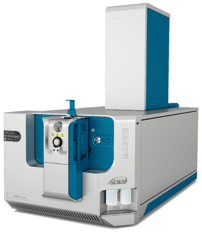
Introduction
The introduction of highly potent novel synthetic opioids (NSO) to the illicit drug market has been a major driver for the recent rise in the number of accidental drug overdoses. NSO are a class of novel psychoactive substances (NPS) that are commonly used as adulterants in heroin and counterfeit preparations to mimic the effects of controlled opioids. These substances vary greatly in potency and purity and thus often require only a small amount to cause acute intoxications. Their increasing occurrence in combined opioid drug toxicity cases, resulting in accidental and fatal drug overdoses, continues to create a major challenge for public health officials.
Traditionally, screening for ultra-potent substances was performed using targeted workflows, such as multiple reaction monitoring (MRM) using triple quadrupole mass spectrometers, because of the higher selectivity and sensitivity performance. However, the continuous emergence of NPS on the recreational drug market is creating an additional challenge for drug tracking agencies and laboratories to meet. High-resolution mass spectrometry has provided forensic toxicology laboratories with a unique tool for the untargeted detection and identification of these new emerging substances, with little or no method optimization necessary. In addition, accurate mass instruments are affording additional levels of certainty by reliably obtaining comprehensive MS/MS spectral fragment information that can be used for identification, confirmation, and/or library matching.
In this technical note, a highly sensitive method for the detection and identification of potent NSO in human whole blood is described. The technological enhancements of the ZenoTOF 7600 system1 provide a high degree of sensitivity, selectivity and confidence for MS/MS experiments. They enable accurate and reliable detection of potent substances in poly-drug, authentic, case samples at trace levels that were not previously achievable.
Figure 1: TOF MS/MS sensitivity gains using Zeno IDA for representative analytes. An average of ~9X gain in TOF MS/MS sensitivity was observed across all analytes identified in this study.
Key features of Zeno IDA for untargeted detection of low level NSO in blood samples
- Zeno trap provides ≥90% duty cycle across the entire mass range for MS/MS acquisition
- Improved duty cycle leads to an MS/MS sensitivity increase, resulting in higher numbers of detections, improved spectral library matching and increased confidence in identification
- MS/MS sensitivity improvements of ~9X, on average, across all MS/MS fragments for the positively identified substances
- Increased MS/MS sensitivity leads to confident detection of low level NPS, metabolites and other potent drugs in discarded authentic postmortem case samples, providing the necessary evidence to support medicolegal death investigations
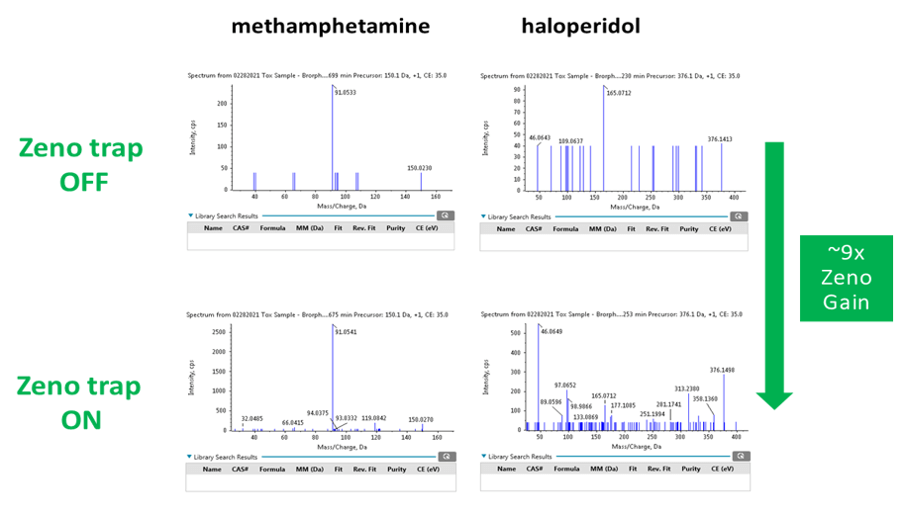 Click to enlarge
Click to enlarge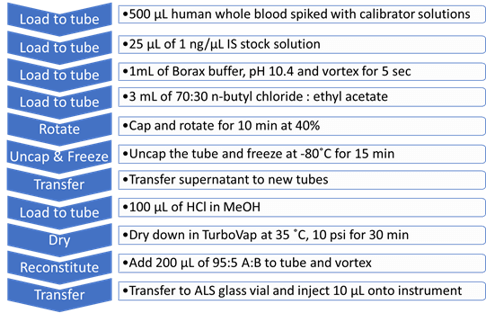 Click to enlarge
Click to enlarge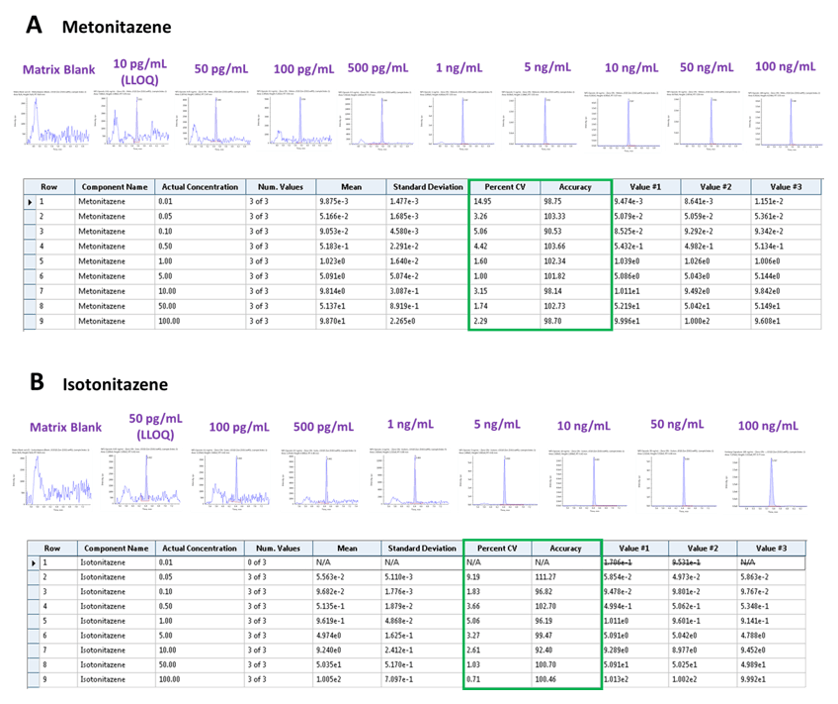 Click to enlarge
Click to enlarge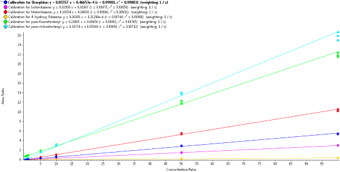 Click to enlarge
Click to enlarge Click to enlarge
Click to enlarge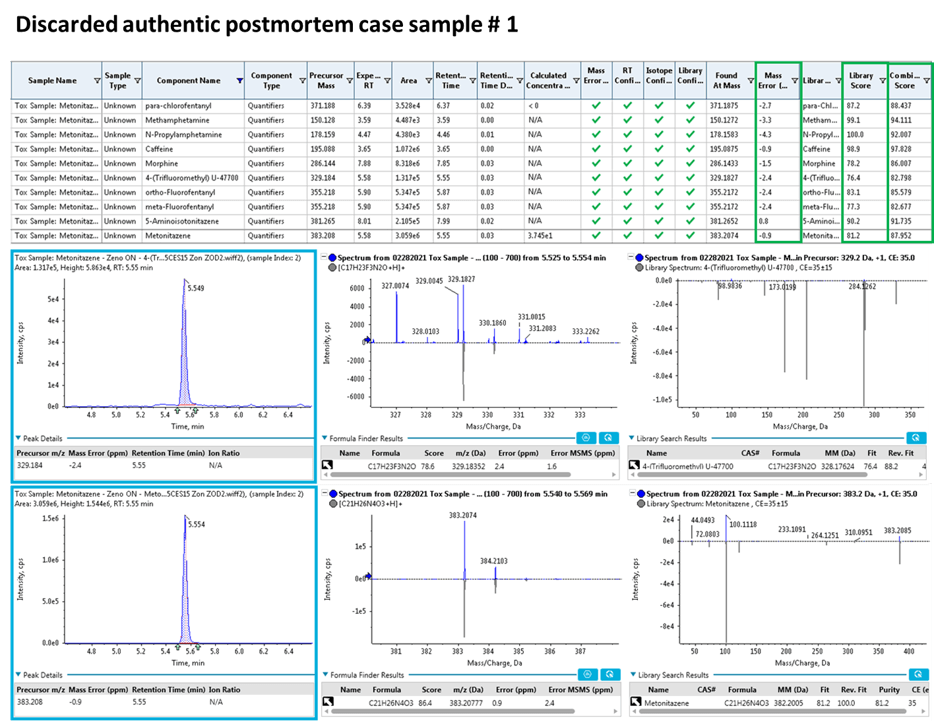 Click to enlarge
Click to enlarge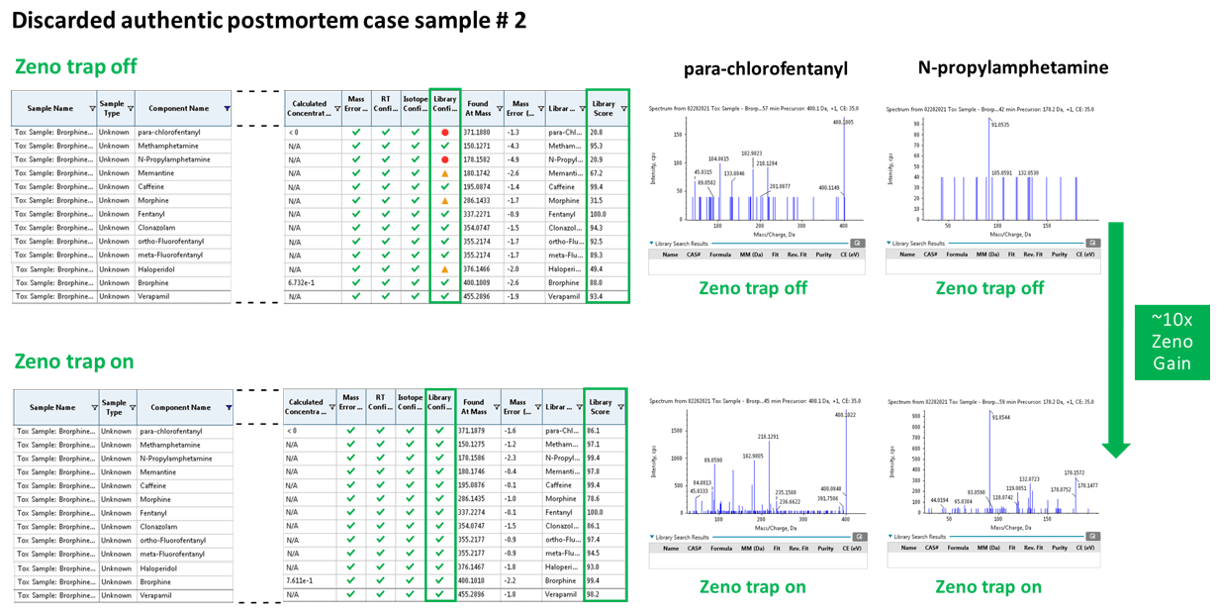 Click to enlarge
Click to enlarge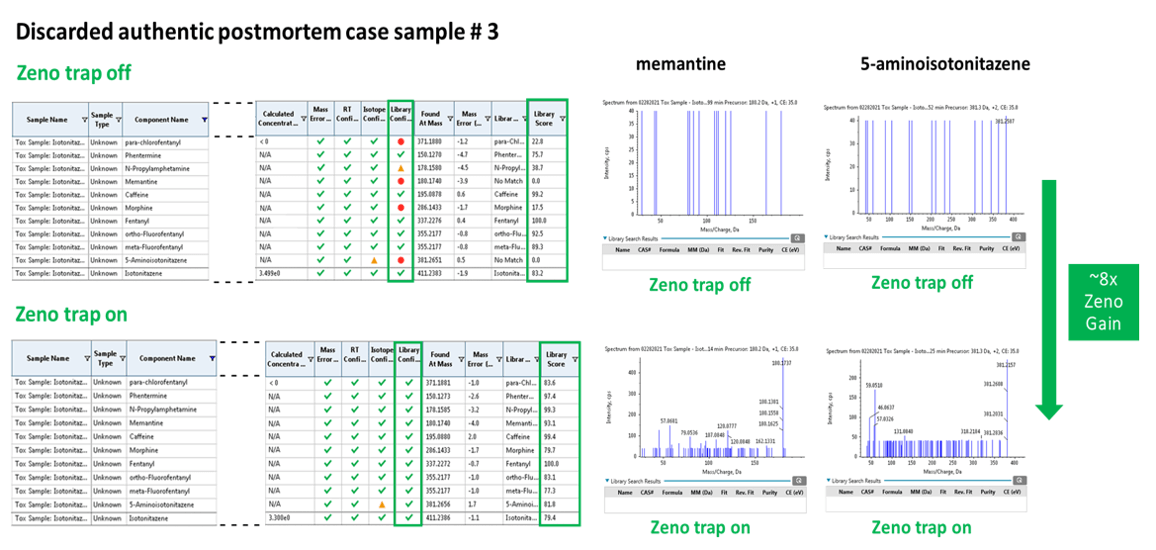 Click to enlarge
Click to enlarge